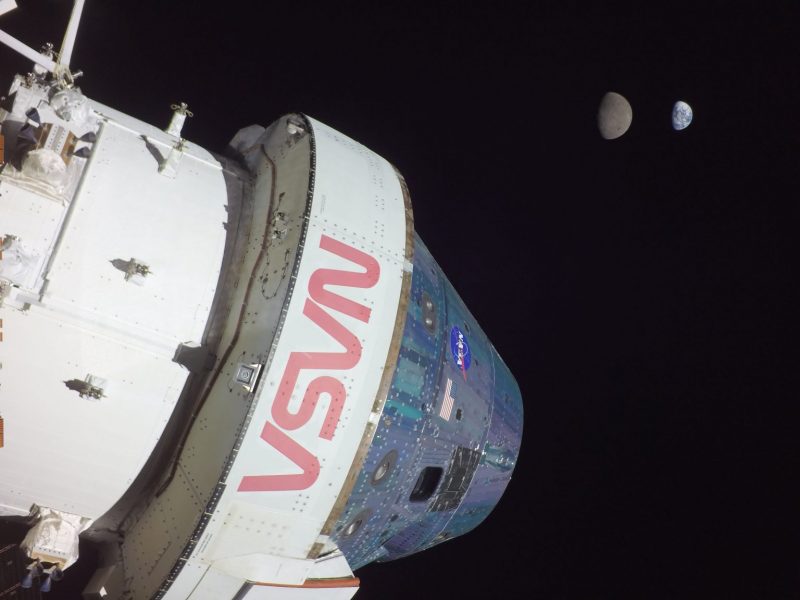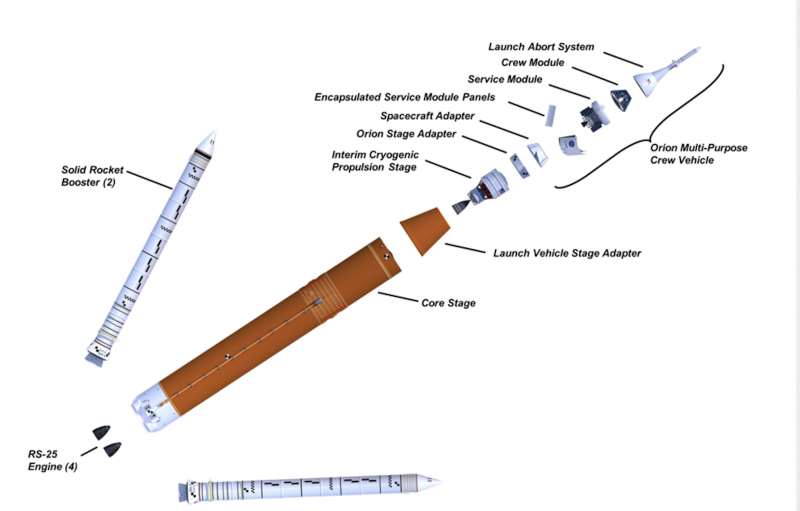Splashdown! Artemis 1 Orion returns from its trip around the moon
Artemis 1 is home
After a successful 3+ weeks as NASA’s first test mission in our human return to the moon, the uncrewed Orion moonship – part of the Artemis program – made its splashdown today, December 11, 2022.
Next time it does this, there will be humans aboard!
Splashdown.
After traveling 1.4 million miles through space, orbiting the Moon, and collecting data that will prepare us to send astronauts on future #Artemis missions, the @NASA_Orion spacecraft is home. pic.twitter.com/ORxCtGa9v7
— NASA (@NASA) December 11, 2022
Orion has splashed down off the coast of Baja, California. Our spacecraft is home.
— Orion Spacecraft (@NASA_Orion) December 11, 2022


Watch the entire mission in 60 seconds
Artemis 1 mission farthest from Earth November 28
Orion reached its farthest distance from Earth just after 3 p.m. CST (21 UTC) on Monday, November 28, 2022. It set a new record for the greatest distance from Earth – for any craft built for human space travel – of 268,563 miles (432,210 km). The Orion craft launched from Earth in the Artemis 1 test mission on November 16, 2022. The farthest point from Earth came on flight day 13 for the mission. The spacecraft captured poignant imagery of Earth and the moon together throughout the day on Monday, including shots of the moon appearing to eclipse Earth.
The craft entered lunar orbit – a distant retrograde orbit – on Friday, November 25. At the time, an ebullient NASA Administrator Bill Nelson commented:
Because of the unbelievable can-do spirit, Artemis 1 has had extraordinary success and has completed a series of history-making events. It’s incredible just how smoothly this mission has gone. But this is a test. That’s what we do, we test it and we stress it.
This Orion capsule is uncrewed for the Artemis 1 test mission. Artemis 2 will carry a human crew into lunar orbit. And Artemis 3 will place humans on the moon for the first time in half a century.

First close approach to the moon on November 21
While crossing the moon’s back side and out of communication with Earth, the Orion capsule swept within 80 miles (~130 km) of the moon’s surface at 7:44 a.m. ET (12:44 UTC) on November 21, 2022. The uncrewed Orion craft successfully completed a “burn” that let it use the moon’s gravity to boost it, first once around the moon, and ultimately into a distant retrograde orbit.
Orion spent six days orbiting the moon before returning to Earth. The November 21 pass near the moon was its closest approach. At its farthest, Orion was 40,000 miles (64,000 km) beyond the moon. That’s farther than any Apollo mission by 30,000 miles (48,000 km).
NASA’s Artemis 1 mission is our first step in a human return to the moon. The sweep past the moon was the first time a space capsule designed for humans has visited the moon since NASA’s Apollo missions 50 years ago.
Check NASA’s Artemis blog for updates.
Artemis 1 launch a big success
After many delays, the SLS lifted off from Launch Complex 39B at Kennedy Space Center in Florida at 1:47 a.m. EST on November 16, 2022. It blasted out some 8.8 million pounds of thrust, making it the most powerful rocket ever to launch from Earth. The rocket lit up the dark night in the early morning hours, a bright beacon in the dark.
NASA described the Artemis 1 mission as:
… setting the stage for human exploration into deep space.
One note. The fiery and powerful launch did do some damage to the launch site.
Per source, the pad damage exceeded mission management’s expectations. Elevator blast doors were blown right off, various pipes were broken, some large sheets of metal left laying around. https://t.co/Z6P6OjxDQv
— Joey Roulette (@joroulette) November 18, 2022
A view of Earth? taken on November 16, 2022 from @NASA‘s Orion spacecraft while about 57,000 miles/92,000 km away on its way to the Moon. North on Earth is to the left here. (Edited screenshot from NASA TV live coverage) #Artemis1 pic.twitter.com/YoCizJvARa
— Jason Major (@JPMajor) November 16, 2022
Longer, faster, hotter
The Artemis 1 mission covered a total of 1.4 million miles (2.2 million km). It got as far away from Earth as 268,563 miles (432,210 km). That’s in contrast to the moon’s farthest distance from Earth of 252,088 miles (405,700 km). NASA explained:
Orion will stay in space longer than any human spacecraft has without docking to a space station and return home faster and hotter than ever before.

Bottom line: The uncrewed Orion moonship has traveled around the moon and returned safely to Earth. The Artemis 1 splashdown was in the Pacific Ocean on December 11, 2022.











